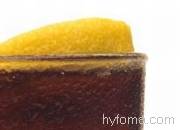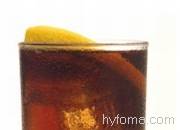
| clasificaciones > bebidas > bebidas gasificadas |
This article is not yet available in the language you selected
Soft Drinks
Article index
 | Production systems | |
 | Contents: Water, sugar, flavorings and essences yield syrup | |
 | Different bottling |
Their conductivity ranges between 1.0 and 3.0 mS/cm.
Since the manufacturing process is very similar, this chapter also covers drinks containing additional advantages, e.g. isotonic drinks, energy drinks, etc. An increasing number of whey-based refreshment beverages are being launched on the market.
Refreshment beverages account for a high proportion of the market for non-alcoholic drinks (NADs).
Most of these drinks are very susceptible to microbiological problems due to their high sugar content. The carbon dioxide counters the growth of some micro-organisms which depend on an oxygen milieu.
Production systems
Systems for producing refreshment beverages normally consist of a storage tank, a silo or a container to store the raw materials such as sugar, essence and flavoring agents, a water treatment unit, a mixing and carbonizing station, if necessary a short-time heating unit and a bottling plant. All systems are cleaned using a CIP (Cleaning-In-Place) unit.Contents: Water, sugar, flavorings and essences yield syrup
Water accounts for the largest proportion. Since there is an interaction at times between the water contents and the flavorings, it may be necessary to completely desalinate and filter the water. Its properties are then used specifically for the drink.Sugar is delivered by a tanker either as a solid, which is dissolved prior to use, or directly as liquid sugar ready for use. The sugar is often apportioned using mass flow meters as they are also able to determine the Brix value of the sugar.
The flavorings and essences are often only used in very low quantities and are therefore apportioned very precisely. The finished mixture of sugar, flavorings and essences is called syrup. It should be noted that the flavorings and essences sometimes do not contain the conductivity that is needed for measurement using MID technology. Coriolis technology is also used for mass flow measurement in this area on account of its high degree of accuracy.
 back to top
back to top

 companias
companias



